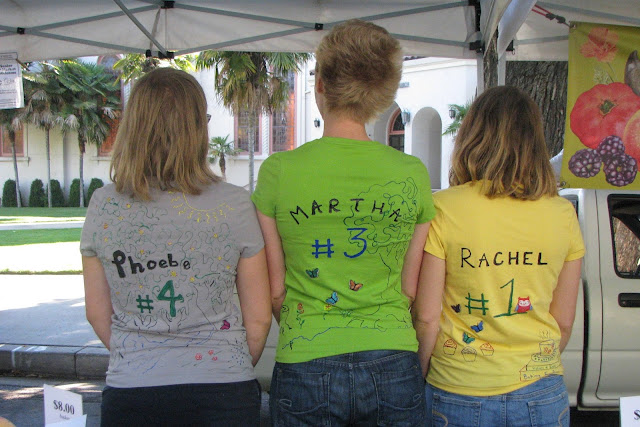 |
| http://vetmed.illinois.edu/wildlifeencounters/grade9_12/lesson2/populations.html |
From the ground up: microorganisms that may or may not benefit the plants, plants that may or may not effect other plants (competition or beneficently draw pollinators). Insects that may eat the plants, pollinate the plants (or both), eat the destructive and productive insects. Birds that might eat the insects, pollinate the plants (or both). Little kitties that might hide in the blackberry trellises and attack your hand thinking its a birdy... Dog that catches gophers and field mice... As intricate system as any.

 Recently I watched a documentary about bees: More Than Honey (Markus Imhoof), which wandered from the Alps to China to almond orchards right here in California. A few days later I had the opportunity to watch my brothers attempt to split a hive they have been nurturing. Thanks to my recent viewing I understood in a basic sense what they were doing; separate some larvae into a new hive where hopefully the workers, lacking a queen, will rear a worker larvae into a queen.
Recently I watched a documentary about bees: More Than Honey (Markus Imhoof), which wandered from the Alps to China to almond orchards right here in California. A few days later I had the opportunity to watch my brothers attempt to split a hive they have been nurturing. Thanks to my recent viewing I understood in a basic sense what they were doing; separate some larvae into a new hive where hopefully the workers, lacking a queen, will rear a worker larvae into a queen.
I don't know how that went, you'd have to ask them
 |
| Guessed Papaya flower? Have a gold star! |
As we all know, flowers typically need or greatly benefit from the help of pollinators. Pollinators range from ants, mosquitoes (on orchids, its a thing!) bees, butterflies, moths, to hummingbirds, bats, bears and humans...
Above a squash blossom, below sweet potato in bloom, looking morning glory-esque
Add wasps and wasp mimics (often flies) to that list of pollinators...

 You may recall a brief mention (See Back in the Homeland) of the multitude of praying mantises, and the new (to me) weird camouflaging...
You may recall a brief mention (See Back in the Homeland) of the multitude of praying mantises, and the new (to me) weird camouflaging...

Mantises are ferocious predators for their size. If you aren't convinced, see below. This photo was published in Nat Geo a few years ago in the Your Shot section, submitted by Sharon Fullingim. I was torn between horror and total fascination. It was emotionally confusing.
All I can say is I hope these guys fare better. I think these are juvenile Anna's, but I could be wrong. The very same that were zipping around the mimosa tree came out to delight in the zinnias after Sam cleared out some weeds.
Here are some hummingbird facts of dubious origin that I gleaned from the internet:
- Their brains make up over 4% of their body weight (largest proportion in the avian realm)
- Reasonable considering the above, they have the capacity to remember which flowers they have visited and how long it will take these flowers to refill.
- They can see ultraviolet light.
- Their feet are weak. Have you ever seen a hummingbird walk?
- They can weigh up to the weight of a penny. A penny!
- They can fly forwards, backwards, up, down, and even upside down. This is possible because their wings can effectively rotate in a full circle.
- There are lots of numbers facts like 70 wing beats/second but up to 200 wing beats/second when diving...
Butterflies
Lepidopterans tend to be pollinators and consumers. The monarch on the milkweed is the famous example, but many butterflies use host plants in juvenile states. Think of the foliage consumption as a fee for pollination if you will.
This swell butterfly is called a Buckeye (Junonia coenia). When it spreads its wings...
BAM eye spots all over, the idea of course being that it will deter predators.
They are a fairly common butterfly in the Nymphalidae family.
Skippers are sweet little butterflies in the Hesperiidae family. I presume they get the name Skipper from the way they hop from flower to flower.
When at rest they hold their wings a little differently, I'm not sure why although I could wildly speculate...
There is a tiny bit more to be said on the marketing front, since my ecosystem post devolved into Look-at-the-Butterflies! anyway.

Martha made a comment about some customers probably think we're the same person. All three of us.We all in fact have very different facial structure, attitudes and mannerisms. So it never ceases to amaze me that people cannot tell us apart. It got more confusing after I got glasses and chopped my hair off too.
So during some down time I went to the trouble of making us some rather cheesy but effective shirts that give our names and our birth order (in the younger batch). Amusement abounded from there on in.
Adieu, have a wild week!






















Just wait until I get glasses. Mas confusion!
ReplyDelete